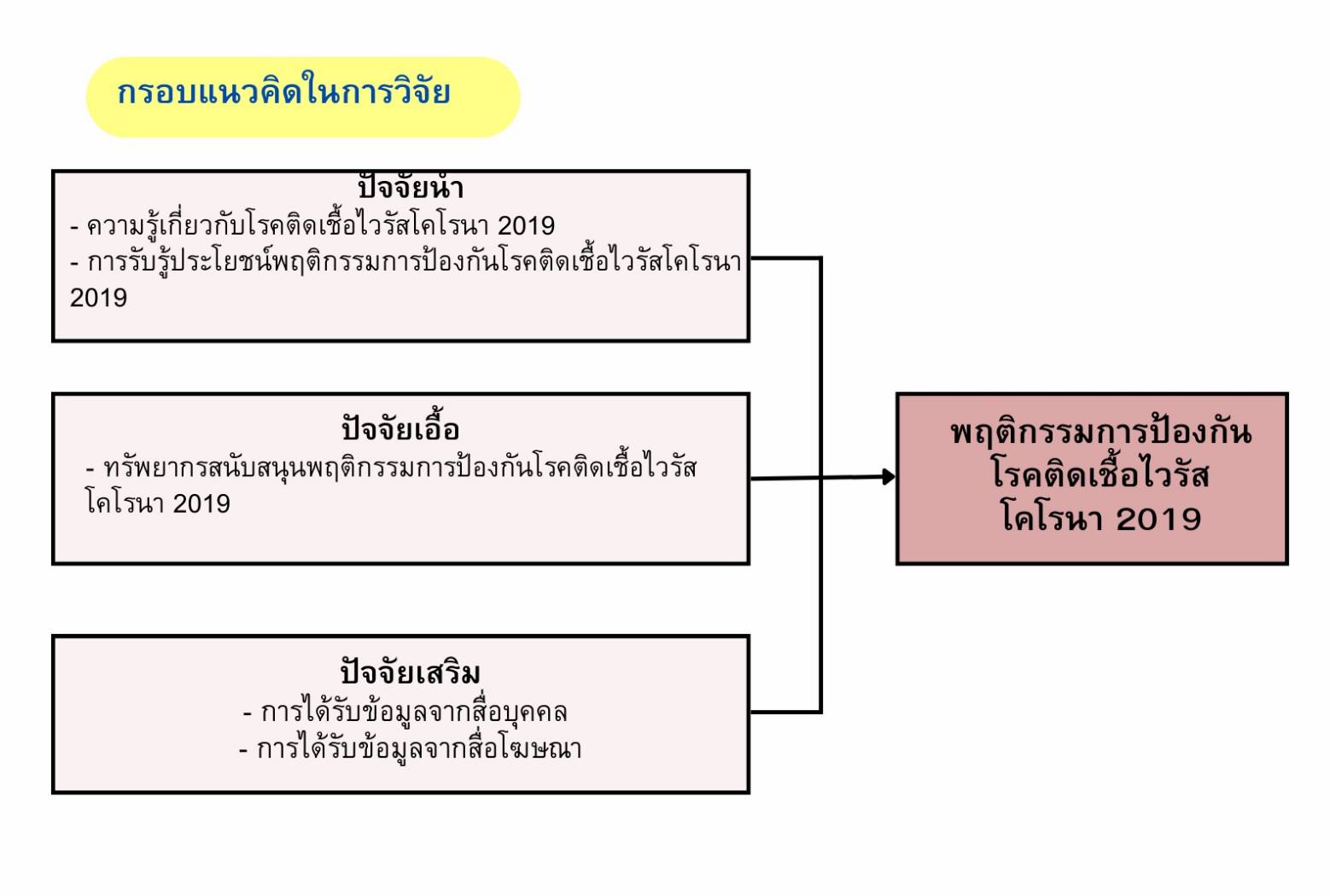ปัจจัยที่มีอิทธิพลต่อพฤติกรรมการป้องกันโรคติดเชื้อไวรัสโคโรนา 2019 ของนักเรียน ระดับชั้นประถมศึกษาตอนปลาย อำเภอเมือง จังหวัดจันทบุรี
คำสำคัญ:
โรคติดเชื้อไวรัสโคโรนา 2019, ปัจจัยนำ, ปัจจัยเอื้อ, ปัจจัยเสริมบทคัดย่อ
วิจัยหาความสัมพันธ์เชิงทำนายนี้ มีวัตถุประสงค์เพื่อศึกษาพฤติกรรมการป้องกันโรคติดเชื้อไวรัสโคโรนา 2019 ของนักเรียนประถมศึกษา ตอนปลาย ในอำเภอเมือง จังหวัดจันทบุรี และเพื่อศึกษาปัจจัยทีมีอิทธิพลต่อพฤติกรรมการป้องกันโรคติดเชื้อไวรัสโคโรนา 2019 ของนักเรียนประถมศึกษาตอนปลาย ในอำเภอเมือง จังหวัดจันทบุรี กลุ่มตัวอย่าง คือ นักเรียนประถมศึกษาตอนปลาย จำนวน 275 คน โดยใช้วิธีการสุ่มตัวอย่างอย่างง่าย แบบจับฉลากไม่คืนที่ เครื่องมือที่ใช้ในการศึกษา คือ แบบสอบถาม วิเคราะห์ข้อมูลด้วยโปรแกรมคอมพิวเตอร์สำเร็จรูป สถิติที่ใช้ในการวิเคราะห์ข้อมูลได้แก่ สถิติพรรณนา Pearson's product moment correlation coefficient และ Regression Analysis
ผลการศึกษาพบว่า พฤติกรรมการป้องกันโรคติดเชื้อไวรัสโคโรนา 2019 ของนักเรียนประถมศึกษาตอนปลายในอำเภอเมือง จังหวัดจันทบุรี อยู่ในระดับดี ปัจจัยนำ ปัจจัยเอื้อและปัจจัยเสริมร่วมกันทำนายพฤติกรรมการป้องกันโรคติดเชื้อไวรัสโคโรนา 2019 ของนักเรียนประถมศึกษาตอนปลาย ในอำเภอเมือง จังหวัดจันทบุรี ได้ร้อยละ 16 อย่างมีนัยสำคัญทางสถิติที่ระดับ .05 ข้อเสนอแนะ ควรมีการส่งเสริมให้นำปัจจัยนำ ปัจจัยเอื้อ และปัจจัยเสริม มาจัดกิจกรรมในการส่งเสริมพฤติกรรมสุขภาพนักเรียน เพื่อป้องกันการติดโรคติดเชื้อไวรัสโคโรนา 2019
เอกสารอ้างอิง
Department of Disease Control. (2020). Ministry of Public Health. Corona Virus Infection Diseases 2019. Retrieved June 10, 2020 from https://ddc.moph.go.th/viralpneumonia/file/g_km/handout001_12032020.pdf. (in Thai)
Thairath Online. (2020). France, 70 cases of COVID – infected people from schools after opening a week. Retrieved May 19, 2020 from https://www.thairath.co.th/news/foreign/1847574. (in Thai)
Wa, A. (2020). COVID-19 and Learning to Behavioral Modification in Health Today. Journal of the Health Education Professional Association. 35(1): 24-29. (in Thai)
McLaughlin, K. A., Hilt, L. M. & Nolen-Hoeksema, S. (2007). Racial/Ethnic Differences in Internalizing and Externalizing Symptoms in Adolescents. Journal of Abnormal Child Psychology. 35: 801-816.
Green lW., Kreuter MW. (2005). Health program planning: An educational and ecological approach. 4th ed. New York: Emily Barrosse.
Nitirungruang P., Ua-Kit N. (2013). Factors Predicting of Allergic Symptoms Preventive Behaviors among school-age Children. Journal of Public Health Nursing. 27(2): 1-13. (in Thai)
Chaiyasung P., Yakasem P., Chuthongrat N. (2014). Factors Predicting Food Consumption Behaviors of Overweight Elementary School Students, Grade 4-6. The Journal of Boromarajonani College of Nursing, Nakhonratchasima. 20(1): 30-43. (in Thai)
Joseph F. Hair, Jr. William C. Black, Barry J. Babin, Rolph E. (2010). Anderson. Multivariate Data Analysis : A global Perspective. 7th Ed. Upper Saddle River, N.J: London.
Stanley, L., David, W. H., Janelle, K., & Stephen, K. L. (1990). Adequacy of sample size in health studies. Chichester: John Wiley & Sons.
Glomjai T., Kaewjiboon J., Chachvarat T. (2020). Knowledge and Behavior of People regarding Self-care Prevention from Novel Coronavirus 2019 (COVID-19). Nursing Public Health and Education Journal. 21(2): 29-39.
waehayi H. (2020). Severity Perception and Preventive Behavior on the Coronavirus disease - 2019 among Youth at Sateng-Nok Subdistrict, Muang District, Yala Province. Academic Journal of Community Public Health. 6(4): 158-168.
Muksing W., Tohyusoh N., Punriddum J. (2016). Factors Related to Health Care Behavior among School Children in Nakhon Si Thammarat Municipality. The Southern College Network Journal of Nursing and Public Health. 3(3): 65-76.

ดาวน์โหลด
เผยแพร่แล้ว
รูปแบบการอ้างอิง
ฉบับ
ประเภทบทความ
สัญญาอนุญาต
ลิขสิทธิ์ (c) 2022 วารสารสาธารณสุขและวิทยาศาสตร์สุขภาพ

อนุญาตภายใต้เงื่อนไข Creative Commons Attribution-NonCommercial-NoDerivatives 4.0 International License.
บทความทุกบทความที่ได้รับการตีพิมพ์ถือเป็นลิขสิทธิ์ของ วารสารสาธารณสุข















